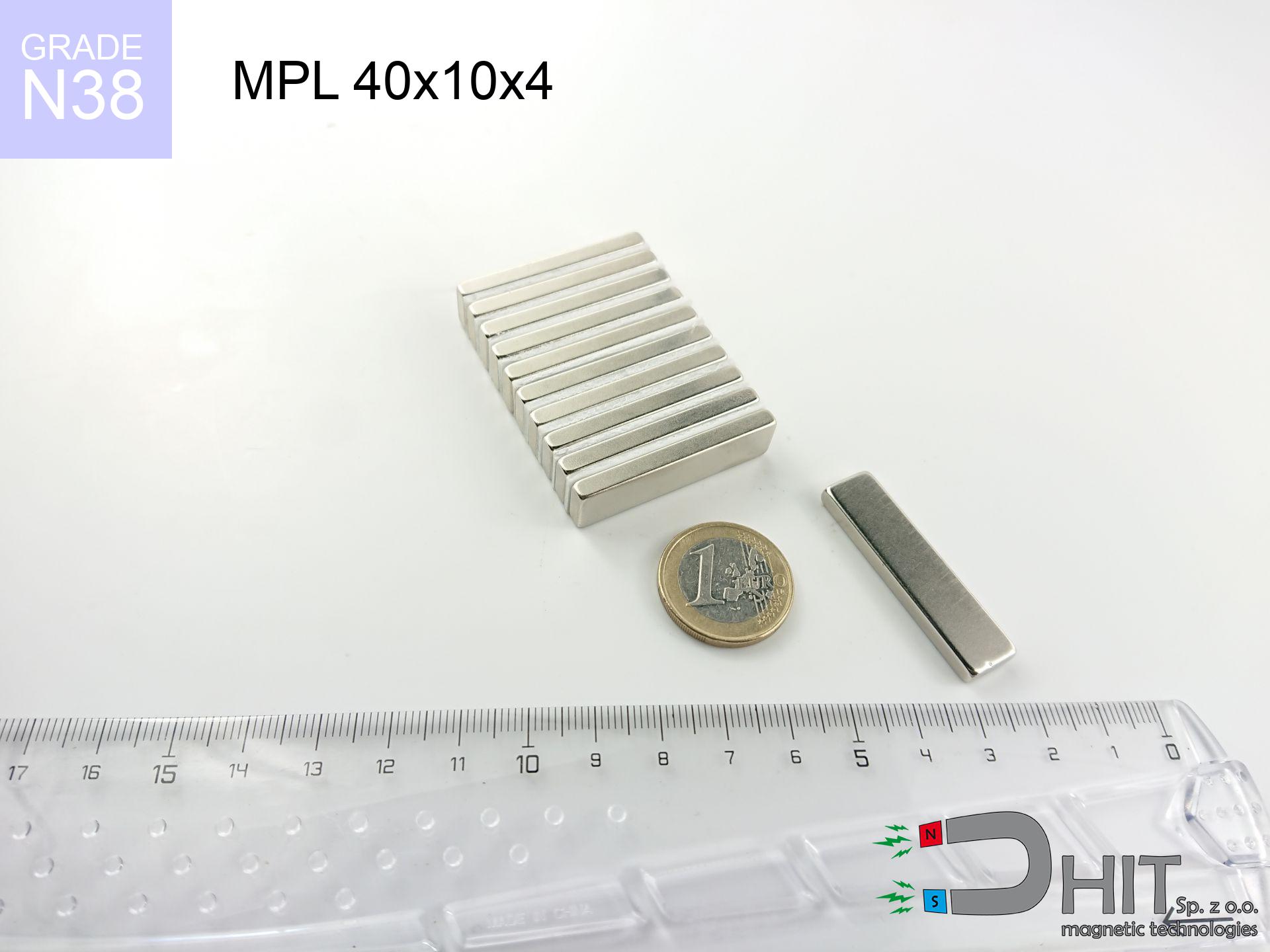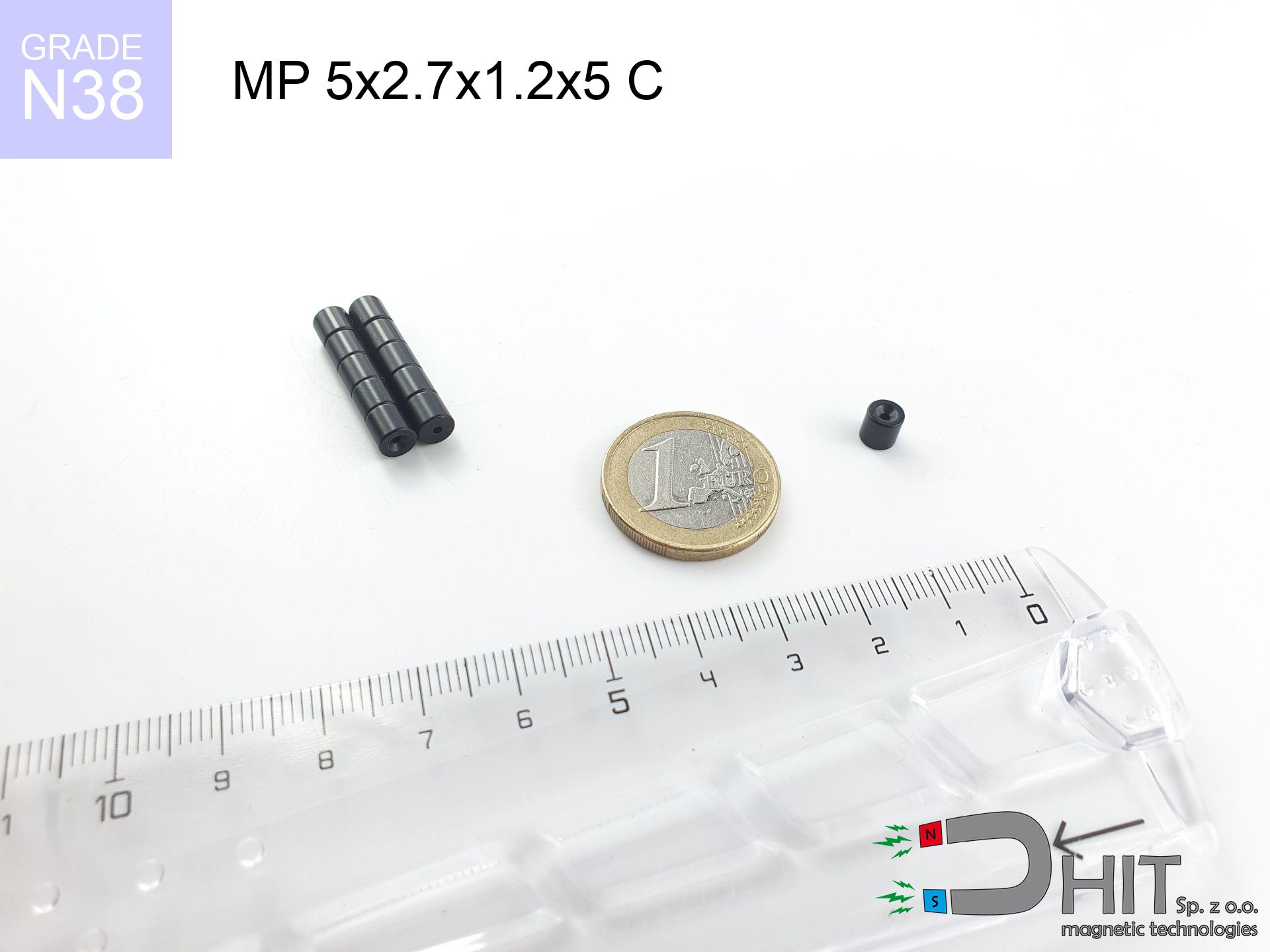SM 32x300 [2xM8] / N52 - magnetic separator
magnetic separator
Catalog no 130459
GTIN/EAN: 5906301813309
Diameter Ø
32 mm [±1 mm]
Height
300 mm [±1 mm]
Weight
1660 g
Magnetic Flux
~ 10 000 Gauss [±5%]
971.70 ZŁ with VAT / pcs + price for transport
790.00 ZŁ net + 23% VAT / pcs
bulk discounts:
Need more?
Pick up the phone and ask
+48 22 499 98 98
or let us know using
our online form
the contact page.
Parameters along with form of a magnet can be calculated with our
our magnetic calculator.
Order by 14:00 and we’ll ship today!
Technical of the product - SM 32x300 [2xM8] / N52 - magnetic separator
Specification / characteristics - SM 32x300 [2xM8] / N52 - magnetic separator
| properties | values |
|---|---|
| Cat. no. | 130459 |
| GTIN/EAN | 5906301813309 |
| Production/Distribution | Dhit sp. z o.o. |
| Country of origin | Poland / China / Germany |
| Customs code | 85059029 |
| Diameter Ø | 32 mm [±1 mm] |
| Height | 300 mm [±1 mm] |
| Weight | 1660 g |
| Material Type | Stainless steel AISI 304 / A2 |
| Magnetic Flux | ~ 10 000 Gauss [±5%] |
| Size/Mount Quantity | 2xM8 |
| Polarity | circumferential - 11 poles |
| Casing Tube Thickness | 1 mm |
| Manufacturing Tolerance | ±1 mm |
Magnetic properties of material N52
| properties | values | units |
|---|---|---|
| remenance Br [min. - max.] ? | 14.2-14.7 | kGs |
| remenance Br [min. - max.] ? | 1420-1470 | mT |
| coercivity bHc ? | 10.8-12.5 | kOe |
| coercivity bHc ? | 860-995 | kA/m |
| actual internal force iHc | ≥ 12 | kOe |
| actual internal force iHc | ≥ 955 | kA/m |
| energy density [min. - max.] ? | 48-53 | BH max MGOe |
| energy density [min. - max.] ? | 380-422 | BH max KJ/m |
| max. temperature ? | ≤ 80 | °C |
Physical properties of sintered neodymium magnets Nd2Fe14B at 20°C
| properties | values | units |
|---|---|---|
| Vickers hardness | ≥550 | Hv |
| Density | ≥7.4 | g/cm3 |
| Curie Temperature TC | 312 - 380 | °C |
| Curie Temperature TF | 593 - 716 | °F |
| Specific resistance | 150 | μΩ⋅cm |
| Bending strength | 250 | MPa |
| Compressive strength | 1000~1100 | MPa |
| Thermal expansion parallel (∥) to orientation (M) | (3-4) x 10-6 | °C-1 |
| Thermal expansion perpendicular (⊥) to orientation (M) | -(1-3) x 10-6 | °C-1 |
| Young's modulus | 1.7 x 104 | kg/mm² |
Table 1: Rod construction
SM 32x300 [2xM8] / N52
| Parameter | Value | Description / Unit |
|---|---|---|
| Diameter (Ø) | 32 | mm |
| Total length | 300 | mm (L) |
| Active length | 264 | mm |
| Section count | 11 | modules |
| Dead zone | 36 | mm (2x 18mm starter) |
| Weight (est.) | ~1834 | g |
| Active area | 265 | cm² (Area) |
| Housing material | AISI 304 | 1.4301 (Inox) |
| Surface finish | Ra < 0.8 µm | Polished |
| Temp. class | 80°C | Standard (N) |
| Force loss (at max °C) | -12.8% | Reversible loss (physics) |
| Force (calculated) | 41 | kg (theor.) |
| Induction (surface) | ~10 000 | Gauss (Max) |
Chart 2: Field profile (11 sections)
Chart 3: Temperature performance
Elemental analysis
| iron (Fe) | 64% – 68% |
| neodymium (Nd) | 29% – 32% |
| boron (B) | 1.1% – 1.2% |
| dysprosium (Dy) | 0.5% – 2.0% |
| coating (Ni-Cu-Ni) | < 0.05% |
Sustainability
| recyclability (EoL) | 100% |
| recycled raw materials | ~10% (pre-cons) |
| carbon footprint | low / zredukowany |
| waste code (EWC) | 16 02 16 |
Other proposals
Advantages and disadvantages of rare earth magnets.
Pros
- They have unchanged lifting capacity, and over more than ten years their performance decreases symbolically – ~1% (in testing),
- They maintain their magnetic properties even under strong external field,
- By applying a decorative coating of gold, the element has an nice look,
- Magnetic induction on the surface of the magnet turns out to be impressive,
- Through (appropriate) combination of ingredients, they can achieve high thermal resistance, allowing for action at temperatures approaching 230°C and above...
- Possibility of exact creating and adapting to individual needs,
- Key role in modern technologies – they serve a role in computer drives, drive modules, medical equipment, also technologically advanced constructions.
- Relatively small size with high pulling force – neodymium magnets offer high power in compact dimensions, which allows their use in compact constructions
Limitations
- They are fragile upon heavy impacts. To avoid cracks, it is worth securing magnets in a protective case. Such protection not only shields the magnet but also improves its resistance to damage
- Neodymium magnets decrease their power under the influence of heating. As soon as 80°C is exceeded, many of them start losing their power. Therefore, we recommend our special magnets marked [AH], which maintain durability even at temperatures up to 230°C
- Due to the susceptibility of magnets to corrosion in a humid environment, we suggest using waterproof magnets made of rubber, plastic or other material resistant to moisture, when using outdoors
- Limited ability of making threads in the magnet and complicated shapes - preferred is a housing - mounting mechanism.
- Potential hazard to health – tiny shards of magnets can be dangerous, if swallowed, which becomes key in the aspect of protecting the youngest. Furthermore, small elements of these magnets can disrupt the diagnostic process medical in case of swallowing.
- Due to neodymium price, their price is relatively high,
Lifting parameters
Highest magnetic holding force – what affects it?
- with the use of a sheet made of low-carbon steel, guaranteeing maximum field concentration
- whose thickness equals approx. 10 mm
- with an polished contact surface
- with zero gap (no paint)
- for force applied at a right angle (pull-off, not shear)
- at ambient temperature room level
What influences lifting capacity in practice
- Space between surfaces – every millimeter of separation (caused e.g. by veneer or unevenness) drastically reduces the magnet efficiency, often by half at just 0.5 mm.
- Load vector – maximum parameter is available only during pulling at a 90° angle. The resistance to sliding of the magnet along the surface is usually several times lower (approx. 1/5 of the lifting capacity).
- Base massiveness – insufficiently thick sheet causes magnetic saturation, causing part of the power to be lost into the air.
- Metal type – different alloys attracts identically. Alloy additives worsen the attraction effect.
- Smoothness – ideal contact is possible only on smooth steel. Rough texture create air cushions, weakening the magnet.
- Operating temperature – NdFeB sinters have a negative temperature coefficient. When it is hot they lose power, and at low temperatures gain strength (up to a certain limit).
Lifting capacity testing was carried out on a smooth plate of suitable thickness, under perpendicular forces, in contrast under attempts to slide the magnet the holding force is lower. In addition, even a slight gap between the magnet’s surface and the plate decreases the lifting capacity.
Warnings
Conscious usage
Before use, read the rules. Sudden snapping can destroy the magnet or hurt your hand. Think ahead.
Demagnetization risk
Regular neodymium magnets (grade N) lose power when the temperature exceeds 80°C. This process is irreversible.
Warning for heart patients
Medical warning: Neodymium magnets can deactivate heart devices and defibrillators. Do not approach if you have medical devices.
Bone fractures
Mind your fingers. Two large magnets will join instantly with a force of massive weight, crushing anything in their path. Exercise extreme caution!
Phone sensors
An intense magnetic field interferes with the functioning of magnetometers in smartphones and navigation systems. Maintain magnets near a smartphone to avoid breaking the sensors.
Keep away from children
These products are not suitable for play. Eating a few magnets can lead to them attracting across intestines, which constitutes a direct threat to life and necessitates urgent medical intervention.
Safe distance
Device Safety: Neodymium magnets can ruin data carriers and sensitive devices (heart implants, medical aids, timepieces).
Warning for allergy sufferers
Some people experience a contact allergy to nickel, which is the common plating for NdFeB magnets. Extended handling might lead to dermatitis. It is best to use protective gloves.
Fire risk
Combustion risk: Neodymium dust is explosive. Avoid machining magnets without safety gear as this may cause fire.
Risk of cracking
Despite metallic appearance, the material is delicate and cannot withstand shocks. Do not hit, as the magnet may crumble into sharp, dangerous pieces.

![Separation magnetic rod SM 32x300 [2xM8] / N52 Separation magnetic rod SM 32x300 [2xM8] / N52](https://cdn3.dhit.pl/graphics/banners/magnet.webp)
![SM 32x300 [2xM8] / N52 - magnetic separator](https://cdn3.dhit.pl/graphics/products/sm-32x300-2xm8-luf.jpg)

![UMGGW 88x8.5 [M6] GW / N38 - magnetic holder rubber internal thread UMGGW 88x8.5 [M6] GW / N38 - magnetic holder rubber internal thread](https://cdn3.dhit.pl/graphics/products/umg-88x8.5-m8-gw-let.jpg)



